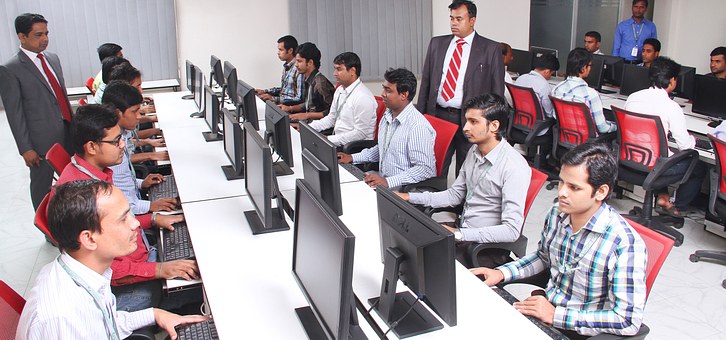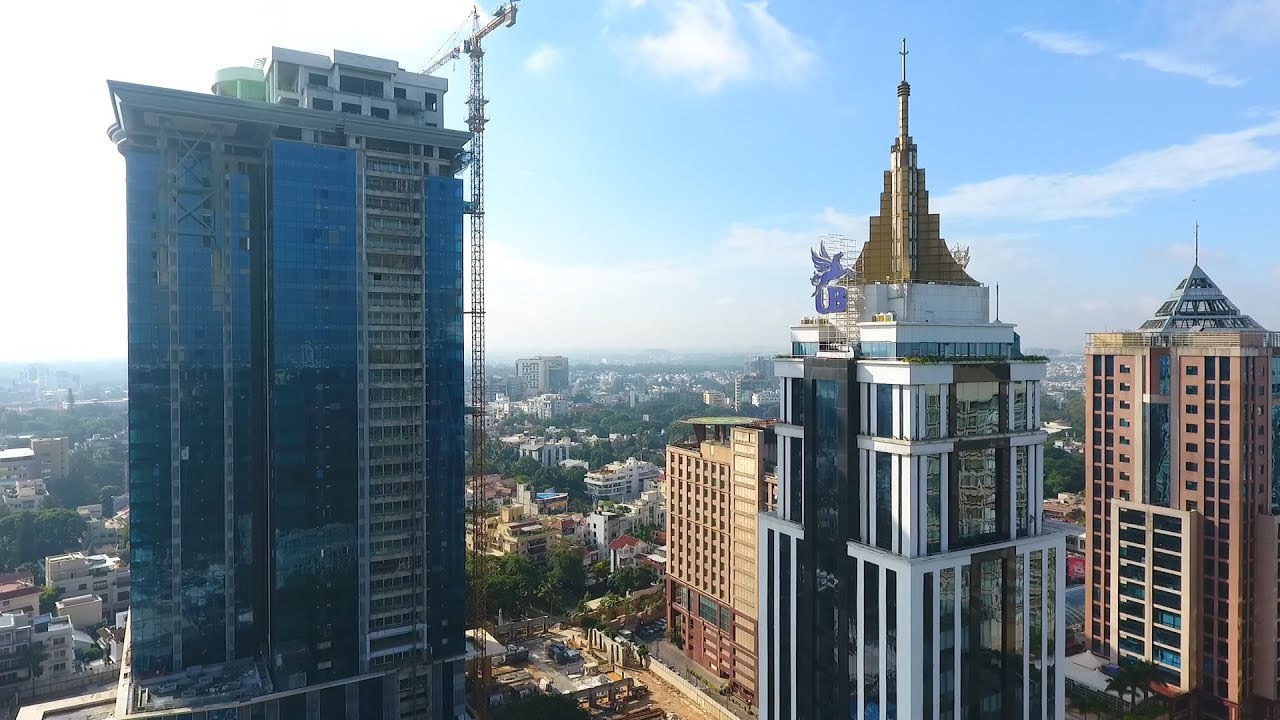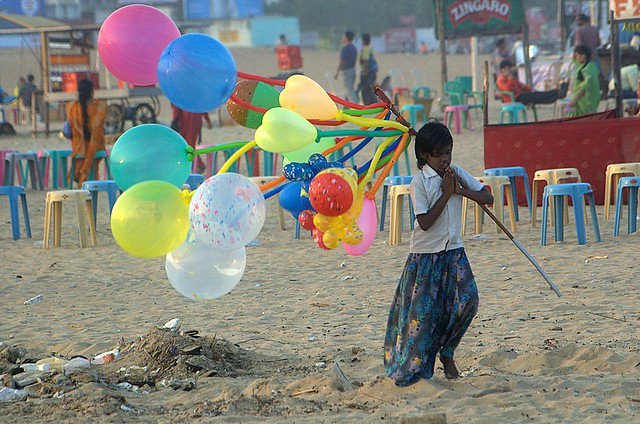Below are statistics from a wide variety of sources that describes India in numbers. It has one of the largest workforces in the world, the fastest-growing cities and a growing group of millionaires but it is also facing a brain drain, challenges in growing work-stress, pollution, and ensuring the security of its ever-growing population, particularly women.
NRI voters
According to estimates of the Ministry of External Affairs, there are about 31 million NRIs living in different countries across the world but unofficial data from the Election Commission of India shows that only about 10,000-12,000 overseas voters have exercised their franchise in the past few polls as they do not want to fly back to India just to cast their vote.
Workforce
According to World Bank data, each year India adds about 12 million young people to the workforce.
According to a report released this year by the Azim Premji University's Centre for Sustainable Employment, people with a graduate degree are more than twice as likely to be unemployed than the national average, adding that women are more likely to be unemployed than men.
Government figures show the proportion of India's 18 to 23-year-olds enrolled in higher education has more than doubled to 25.8 per cent from 12.6 per cent in 2004, and is expected to rise to 30 per cent by 2020.
More than 80 per cent of Indians work in jobs without regular pay or social benefits, according to the International Labour Organisation. The World Bank says agriculture accounts for 42 per cent of the workforce.
Nearly a third of the 93,000 applicants for 62 police courier jobs in Uttar Pradesh had doctorates. In government jobs which also provide security, benefits, and relatively good pay–minimum salaries are currently set at INR 18,000 a month, while 67 per cent of the workforce earn less than INR 10,000 per month.
Workplace stress
A recent survey conducted by medical insurance provider Cigna TTK revealed that nine out of 10 Indians suffered from stress. Over 95 per cent of Indian millennials suffer from workplace stress. The global average is 86 per cent.
Fast-growing cities
Seventeen of the world’s 20 fastest-growing cities during 2019-35 are expected to be all Indian, according to a report published by Oxford Economics, a research house engaged in global forecasting and quantitative analysis.
The top 10, in a descending order, are all Indian cities – Surat, Agra, Bengaluru, Hyderabad, Nagpur, Tiruppur, Rajkot, Tiruchirapalli, Chennai and Vijayawada.
The report predicts that Bengaluru will top these cities in 2035.
Exiting Millionaires
In 2018, as many as 5,000 millionaires from India left for foreign shores, citing better quality of life or similar reasons. Indeed, according to a Times of India report, some 43,400 multi-millionaires have bid goodbye to India in the past 10 years.
China, Russia and India rank as the top three countries losing high net-worth individuals worldwide, followed by the UK and France. Although India will be the fourth largest wealth market by 2028, China currently leads the charts as the best-performing country in terms of wealth creation. India's growth rate, in terms of wealth creation, at the moment is a staggering 96% despite losing hundreds of millionaires in the past decade.
Netizens
The annual internet statistics and trends report from venture capitalist Mary Meeker said that more than half the world’s population – 3.8 billion – is online with China and India leading the pack, followed by the US, Indonesia, and Brazil.
Women under attack
India is the most dangerous country in the world for women, according to a study by the Thomson Reuters Foundation, the philanthropic arm of the media company. India was ranked as the most dangerous place because of its high incidences of sexual violence, lack of access to justice in rape cases, child marriage, female feticide and human trafficking. India outranked such countries as Syria and Afghanistan – second and third – that are currently at war.
The reported cases of crimes against women rose 83 per cent between 2007 and 2016, with four cases of rape every hour. India also has the highest number of child brides – around a third of all girls are married before their 18th birthday – and its own government estimated earlier this year that there are 63 million “missing” women in the country because of sex-selective abortion, as well as 21 million unwanted girls.
Air pollution
A Centre for Science and Environment report said that air pollution killed an average of 8.5 out of every 10,000 children in India before they turn five.
Child labour
There are 10.13 million child labourers aged between 5-14 years in India, and 22.87 million working children aged between 15-18 years.
Analysis of census data by Child Rights and You revealed that about 1.4 million child labourers in India in the age group of 7-14 years can't write their names.
Forty-five per cent of child labourers in Bihar are illiterate, followed by Rajasthan and Jharkhand (40%), Madhya Pradesh and Andhra Pradesh (38%).
Uttar Pradesh has a staggering 250,672 child labourers, followed by Bihar (128,087) and Maharashtra (82,847).
Cybercrimes
A National Crime Records Bureau India report said the country witnessed a 457% rise in cybercrime incidents during 2011-2016. The country has been ranked among the top five countries to be affected by cybercrime. The number of internet users grew by 44%, making India third after the US and China.
Bengaluru registered the highest number of cybercrime cases in 2018. The country’s technology capital saw a whopping 5,035 FIRs registered at the lone cybercrime police station in the city. At least 2,945 cases were registered in Maharashtra till September 2018 and most of them were in Mumbai.
In Delhi, in 2017, only 84 FIRs were registered at the cybercrime cell. In Chennai, 5,703 complaints have been received by the cybercrime cell in the past five years.
In 2016, with 762 cases, Bengaluru had the second-highest number of cybercrime cases among the metros, behind Mumbai with 980 cases. Other metros in the list were far behind, with Hyderabad recording 291 cases, Kolkata 168, Delhi 90 and Chennai 36. From 762 to 5,035, the number of cases has seen a sharp increase in Bengaluru.
Cancer deaths
Every day 1,500 people die of cancer in India making it the second most common cause of death after cardiovascular disease. And nearly 2,000 new cancer cases are detected in the country daily, according to National Institute of Cancer Prevention and Research. Projections put the number of new cases by 2020 at 17.3 lakh.






